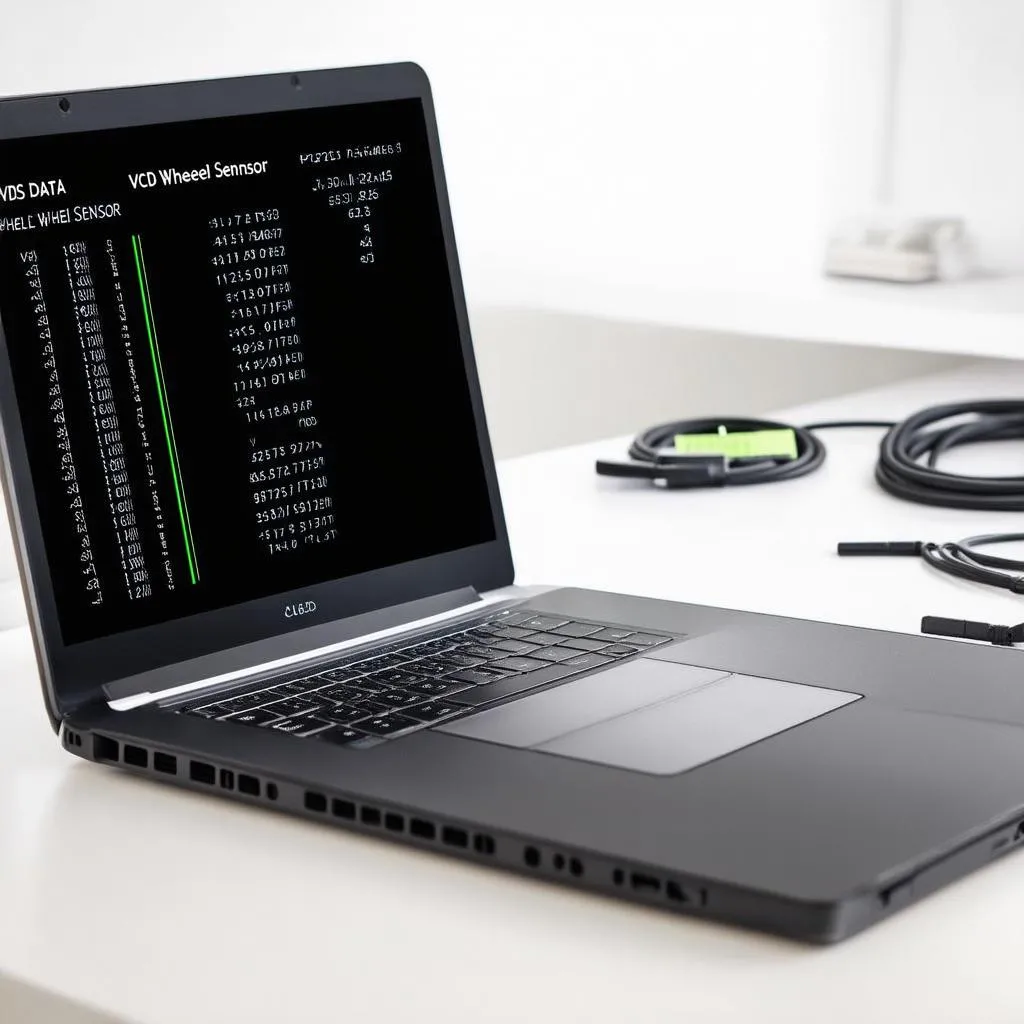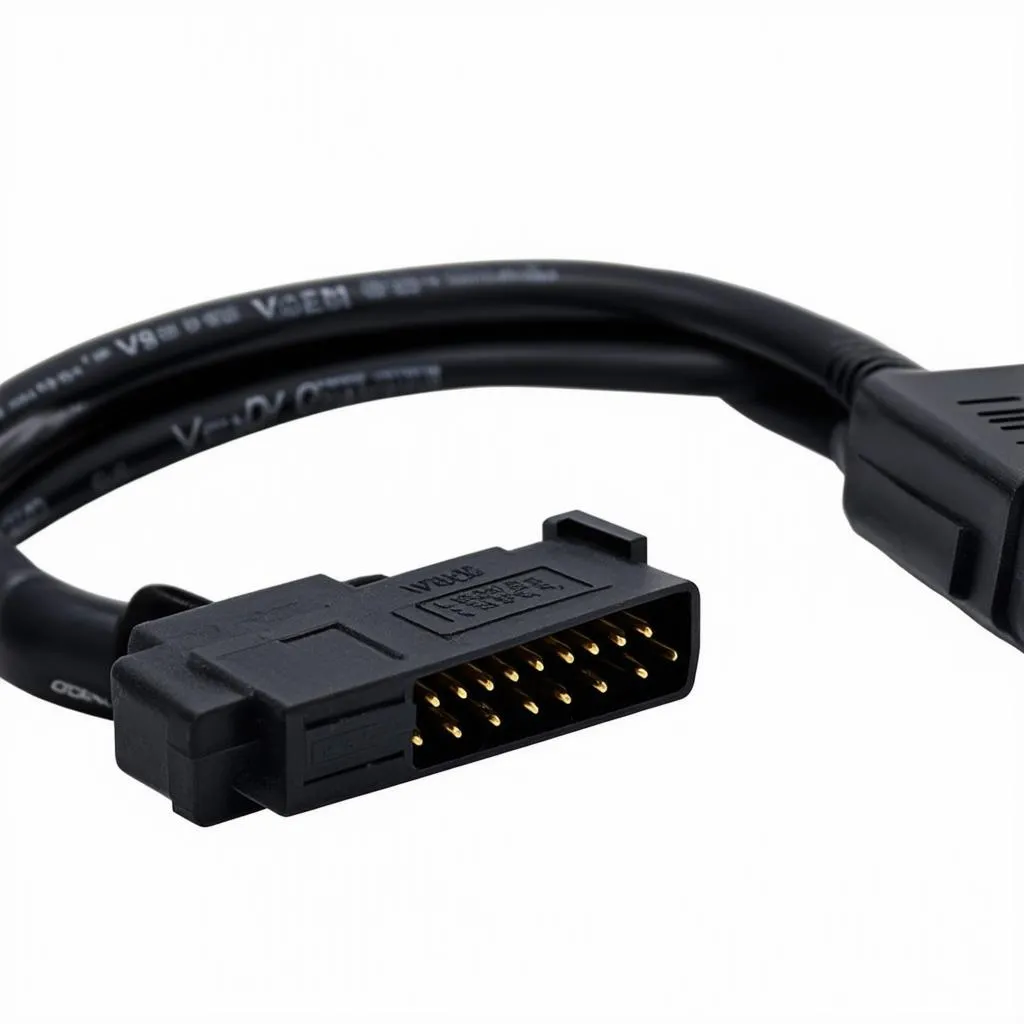A failing wheel speed sensor can throw your car’s ABS system into disarray, leading to a less safe driving experience. Diagnosing a faulty wheel speed sensor can be a tricky endeavor, but thankfully, tools like VCDS (Vag-Com) can make the process significantly easier. This article will delve into the world of the Vcds Wheel Speed Sensor Test, outlining what it is, why it’s essential, and how you can perform it yourself.
What is a VCDS Wheel Speed Sensor Test?
VCDS, or Vag-Com, is a powerful diagnostic software used primarily for vehicles in the Volkswagen Group (VW, Audi, Seat, Skoda). Amongst its many capabilities is the ability to directly communicate with and analyze data from your car’s ABS system, including the wheel speed sensors.
The VCDS wheel speed sensor test involves using the software to read live data from each sensor as you drive. This data, usually displayed in RPM or km/h, provides a real-time view of how each sensor is performing and can pinpoint any irregularities.
Why is a VCDS Wheel Speed Sensor Test Important?
Your car’s wheel speed sensors play a crucial role in the Anti-lock Braking System (ABS) and Electronic Stability Control (ESC). They constantly monitor the rotational speed of each wheel, relaying this information to the car’s computer.
If a sensor malfunctions and sends incorrect data, your ABS and ESC systems might not function optimally. This could lead to wheel lockup during hard braking, reducing your ability to maintain steering control. In some cases, a faulty sensor might even trigger the ABS warning light on your dashboard.
Regularly performing a VCDS wheel speed sensor test can help you:
- Identify failing sensors early: Catching a problem early can save you from expensive repairs down the line.
- Diagnose ABS issues: If your ABS light is on, this test can help pinpoint the culprit.
- Ensure optimal safety: A properly functioning ABS system is paramount for your safety on the road.
How to Perform a VCDS Wheel Speed Sensor Test
Performing a VCDS wheel speed sensor test is a straightforward process, even for those new to car diagnostics. However, it does require a basic understanding of the VCDS software.
Here’s a step-by-step guide:
- Connect VCDS to your car: Connect the VCDS interface to your car’s OBD-II port and your computer.
- Launch VCDS and establish connection: Turn on the ignition and launch the VCDS software on your computer. Ensure a successful connection to your vehicle.
- Select Control Module: Navigate to the “Select Control Module” section.
- Choose ABS Brakes: Select the control module related to your car’s ABS system, usually labeled as “ABS Brakes.”
- Access Measuring Blocks: Within the ABS module, locate and select “Measuring Blocks – 08.”
- Select Sensor Groups: Depending on your car model, you’ll need to select the appropriate group that displays the wheel speed sensor data. This information is usually found in the VCDS function list or through a quick online search for your specific car model.
- Monitor the Values: Once you’ve selected the correct group, you’ll see live data from all four wheel speed sensors.
- Test Drive: Take your car for a short drive, preferably reaching speeds up to 30 mph.
- Analyze the data: As you drive, observe the readings from each sensor. They should fluctuate smoothly and proportionally to your speed. Any erratic readings, significant deviations between sensors, or readings stuck at 0 km/h usually indicate a problem.
Important Note: It’s always recommended to consult your car’s repair manual or seek guidance from a qualified mechanic if you are unsure about any step of the process.
 VCDS Wheel Speed Sensor Test
VCDS Wheel Speed Sensor Test
Understanding the Results
Analyzing the data from the VCDS wheel speed sensor test is crucial. Here are some common irregularities and what they might indicate:
- Sensor Reading Stuck at 0: This usually points towards a completely failed sensor, damaged wiring, or a faulty ABS control unit.
- Erratic or Fluctuating Readings: This could indicate a loose sensor, a damaged sensor ring, or a wiring issue.
- Significant Deviations Between Sensors: This suggests one or more sensors might be providing inaccurate readings, potentially due to alignment issues or sensor malfunction.
 Analyzing VCDS data
Analyzing VCDS data
Common Questions About VCDS Wheel Speed Sensor Tests
Q: Can I use VCDS to diagnose ABS problems other than wheel speed sensors?
A: Yes, VCDS can diagnose various ABS issues, including problems with the ABS module, pump, valve, and wiring. It can also read and clear ABS fault codes.
Q: What should I do if the VCDS test reveals a faulty wheel speed sensor?
A: If the test identifies a faulty sensor, the next step is to inspect the sensor and its wiring for visible damage. If you can’t find any apparent issues, it’s best to consult a qualified mechanic for further diagnosis and repair.
Q: Can I perform a VCDS wheel speed sensor test on car brands other than Volkswagen Group vehicles?
A: VCDS is primarily designed for Volkswagen Group vehicles. While it might work with some other car brands, it’s not guaranteed. It’s always best to check the VCDS compatibility list or consult with their support team for confirmation.
Conclusion
The VCDS wheel speed sensor test is a valuable tool for any DIYer or car enthusiast with a Volkswagen Group vehicle. By enabling you to monitor the health of your wheel speed sensors, you can take proactive steps to maintain the optimal functionality of your ABS system, ultimately ensuring a safer driving experience.
If you’re looking for top-quality diagnostic tools like VCDS, be sure to check out the wide range of products available at CARDIAGTECH. Their team of experts can help you find the right tools for your needs and provide guidance on using them effectively.


